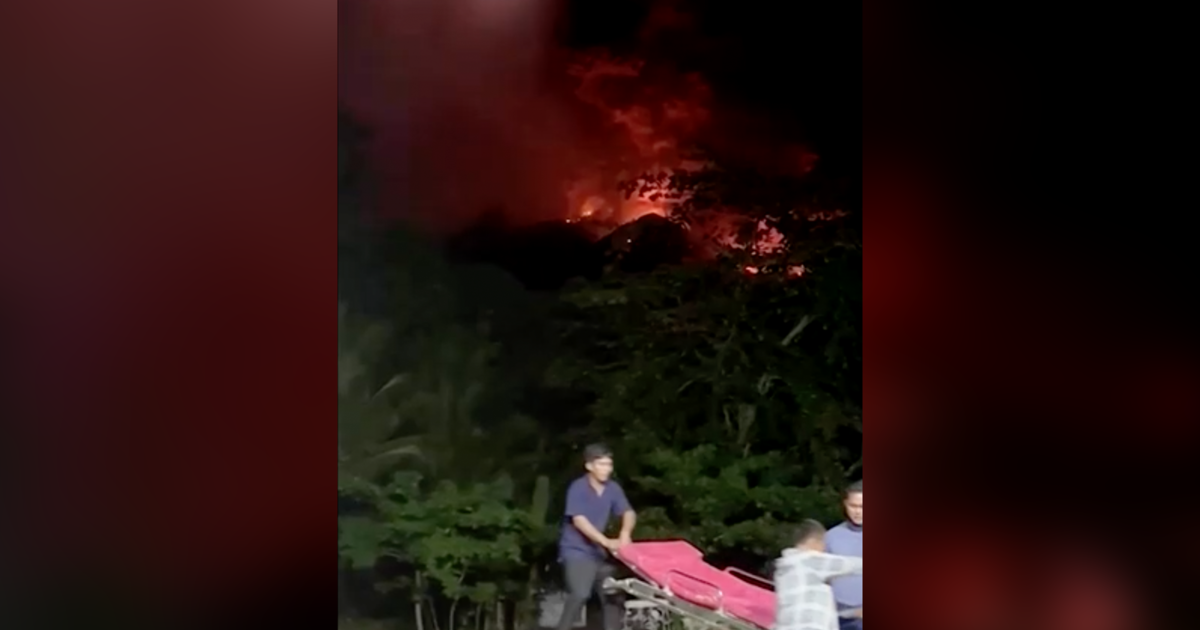Hundreds of people in Indonesia had to be evacuated from their homes in the North Sulawesi province as the Ruang volcano continues its days-long eruption. The volcano has been seen filling the sky with red ash as the country’s volcano monitoring agency reports hundreds of deep volcanic earthquakes.
Indonesia’s National Agency for Disaster Countermeasure, known as BNPB, said in a news release on Wednesday that volcanic activity has increased, prompting officials to raise the alert level to three – the second-highest warning level in their monitoring system. Video taken by the agency showing massive red bursts filling the sky as lightning flashes within it. The agency also reported “volcanic ash rain.”
At least 828 people were evacuated from the area amid the eruption, BNPB said, many boarded onto ferries to go to nearby areas.
The latest eruption occurred early Wednesday morning local time, the Multiplatform Application for Geohazard Mitigation and Assessment in Indonesia (MAGMA Indonesia) reported. The agency said that people in the area should be calm and “carry out their activities as usual,” but refrain from going within 2.5 miles of the volcano’s active crater, which overnight was seen spewing a bright red glow into the sky.
That agency reported 373 deep volcanic earthquakes and one local tectonic earthquake on Wednesdsay.
On Tuesday, the Volcano Observatory Notice for Aviation (VONA), issued an orange-colored aviation code, indicating a “volcano is exhibiting heightened unrest with increased likelihood of eruption” or that an eruption is underway, but with “no or minor ash emission.”
“Eruption and ash emission is continuing,” VONA said in the update. “…Rumbling sound heard from Ruang Volcano Observatory.”
The stratovolcano is the southernmost in the Sangihe Island arc, the Smithsonian Institution’s Global Volcanism Program says, and its summit has a crater partially filled with a lava dome, which forms when exceptionally thick lava flows are too thick to flow out.
“Explosive eruptions recorded since 1808 have often been accompanied by lava dome formation and pyroclastic flows that have damaged inhabited areas,” the Global Volcanism Program says.
Indonesia sits along the “Ring of Fire,” the most active zone in the world for seismic activity.
In December, more than 20 people died in Indonesia after a surprise volcanic eruption at Mount Marapi on the island of Sumatra.

